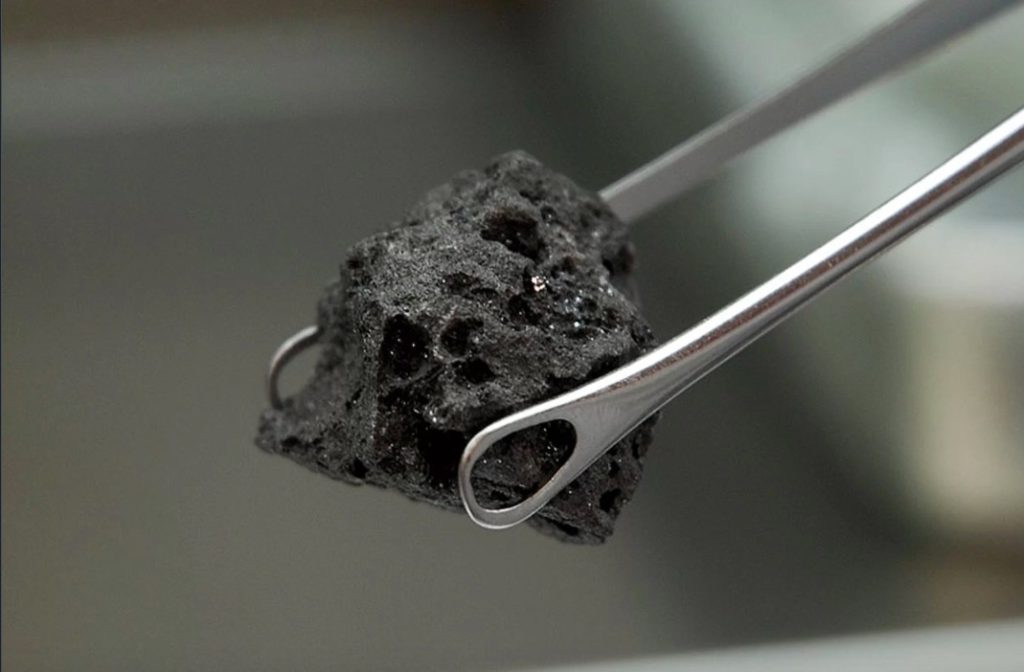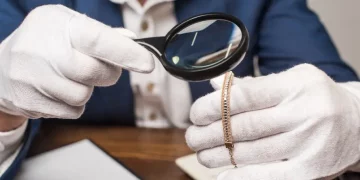In the vast realm of space exploration, few items hold as much prestige or fascination as artifacts from the Moon. The Apollo missions, which brought astronauts to the lunar surface between 1969 and 1972, are iconic milestones in human history. The lunar rocks and dust collected during these missions have remained some of the most sought-after treasures on Earth. However, in an unexpected move that has sent shockwaves through the world of space enthusiasts and collectors alike, NASA recently made the controversial decision to auction off Moon dust. This unprecedented decision has ignited a firestorm of debate, with collectors and enthusiasts expressing their outrage over what they see as the commodification of one of humanity’s most significant scientific and cultural legacies.
In this article, we will explore the circumstances surrounding NASA’s decision to auction off Moon dust, the legal and ethical implications of such a move, and the far-reaching impact on private collector markets. We will also delve into the history of government involvement in the sale of space artifacts and examine the delicate balance between public access to rare collectibles and the preservation of scientific heritage.
The Controversial Auction: How NASA Decided to Sell Moon Dust
In a move that surprised many, NASA decided to auction off a small sample of lunar dust collected during the Apollo 17 mission, the final crewed mission to the Moon. The sample, which had been in storage for over 50 years, was originally presented to a government official as part of a diplomatic gift. However, in recent years, it became clear that the dust had not been properly cataloged or protected by NASA’s rigorous scientific protocols, leading to confusion and legal disputes over its ownership.
NASA’s decision to auction off the sample was part of a larger push by the U.S. government to legally divest certain artifacts that had been in government hands for decades. With the growing interest in space-related collectibles and the rise of private sector space endeavors like SpaceX, NASA saw an opportunity to generate revenue and clear up legal ambiguities regarding the ownership of certain materials.
The auction, which took place through a high-profile auction house, sparked immediate controversy. Many collectors were outraged by the fact that a piece of lunar history—a symbol of human achievement—was being sold to the highest bidder. The auction drew attention to the growing trend of government entities monetizing rare scientific artifacts, a practice that raises fundamental questions about the stewardship of items that belong to the public.
The Outrage Among Collectors: The Commodification of Space History
For private collectors, particularly those who have spent years acquiring rare space memorabilia, NASA’s auction of Moon dust was seen as a betrayal. Many collectors felt that items related to the Apollo missions should remain within public institutions, such as museums and archives, where they could be preserved and displayed for future generations. The idea of space artifacts being sold to the highest bidder was seen as a dangerous precedent that could undermine the integrity of space history and alienate collectors who have spent years contributing to the preservation of space-related artifacts.
The fury expressed by the collector community can be attributed to several factors. For one, many believed that NASA’s auction of Moon dust violated the spirit of the space program itself. The Apollo missions were a monumental achievement in human history, and for many, the artifacts collected during these missions represent not just scientific milestones, but symbols of national pride and global cooperation. The sale of such items to private collectors was seen as a disservice to the public, as it effectively privatized a part of humanity’s shared history.
Additionally, some collectors felt that the auction of Moon dust was a cynical cash grab by NASA. While the proceeds from the sale were purportedly to go toward funding future space exploration projects, critics argued that NASA’s decision to sell the sample was a short-term financial solution that undermined the long-term value of space-related artifacts. The auction raised concerns about the broader trend of privatizing public heritage, with critics pointing out that NASA’s move could set a dangerous precedent for the sale of other space-related items in the future.
The Legal and Ethical Issues Surrounding the Auction
The sale of Moon dust raised significant legal and ethical questions that have yet to be fully addressed. As the ownership of space-related artifacts has long been a murky issue, NASA’s decision to auction off the lunar sample sparked a debate about who truly owns the materials collected during the Apollo missions.
Under the U.S. Space Act of 1958, all materials collected during NASA missions were supposed to be considered public property. However, the law did not account for the specific handling and categorization of these items, which led to confusion over ownership and jurisdiction. Over the years, various government entities, including NASA and the U.S. State Department, have been involved in the sale or transfer of space artifacts, but the process has often been opaque and inconsistent.
The Moon dust sample that was auctioned had originally been presented as a diplomatic gift, which complicated matters further. While it had been stored at NASA’s Johnson Space Center in Houston, the question of whether it was a public or private item remained unresolved. The sale of the sample raised important questions about the definition of ownership in the context of government-provided artifacts and whether such materials can be legally sold or transferred into private hands.
From an ethical standpoint, the auction also raised concerns about the public’s right to access and experience important historical items. Space history, like all forms of national heritage, is often seen as a collective memory that belongs to the people. The decision to sell a piece of that history to a private collector was seen by many as a violation of that collective ownership, as it effectively restricted access to an artifact that was once considered a symbol of human progress and achievement.

The Impact on Private Collector Markets
The auction of Moon dust has had a significant impact on the private collector market, particularly when it comes to space-related memorabilia. Collectors have long viewed items from the Apollo missions, such as flown spacecraft parts, mission patches, and autographed photographs, as valuable investments. However, the sale of actual lunar materials is in a category all its own. The sale of Moon dust marked a shift in the way collectors view space artifacts, with many now questioning the authenticity, legality, and future availability of such items.
One of the most immediate impacts of the auction was the surge in demand for other space-related materials. Collectors, sensing that more lunar items could be up for grabs, began to actively search for pieces with verifiable provenance. While some collectors were hopeful that future auctions would include more Apollo-era artifacts, others were wary of the potential for inflated prices and the commodification of historical items.
The auction also raised questions about the value of space-related artifacts in the broader collectibles market. While Moon dust had always been considered a rare and valuable item, the decision to sell it to the highest bidder caused many to question whether space artifacts would continue to hold their original value if they were sold in such a manner. Collectors feared that the increasing trend of auctioning off space-related materials could lead to a market where only the wealthiest individuals could afford to own a piece of lunar history, further limiting access to what was once considered a collective treasure.
The Future of Space Artifacts in Private Collectors’ Hands
In the wake of the auction, many experts have begun to question the long-term implications of privatizing space history. While the sale of space-related items may generate significant revenue in the short term, critics argue that it could undermine the preservation and education value of these items in the long run. The fact that rare items such as Moon dust are now up for auction raises concerns about the future accessibility of space artifacts and whether the public will have the opportunity to engage with these objects in meaningful ways.
Museums and public institutions that specialize in space history may also feel the impact of this shift. As private collectors snap up increasingly rare space items, institutions may find it more difficult to acquire such pieces for display and educational purposes. The decision to auction off Moon dust may represent a turning point in the way we view space artifacts—shifting from their status as historical treasures for public consumption to commodities that can be bought and sold on the open market.
Additionally, the question of provenance becomes increasingly important in a market where more and more space-related items are being sold privately. For collectors, ensuring the authenticity and legal status of these items is paramount. The more space-related artifacts are auctioned off, the greater the risk that forgeries or misattributions could enter the market. As the private sector becomes more involved in the collection of space artifacts, ensuring transparency and proper verification will be essential to maintaining the integrity of the market.
Conclusion: A Shift in the Cosmos of Collectibles
NASA’s decision to auction off Moon dust has irrevocably altered the landscape of space collectibles. For many collectors, it was an upsetting moment—a betrayal of the collective ownership of one of humanity’s greatest achievements. The legal and ethical implications of the auction continue to reverberate through the collectibles community, raising important questions about the ownership and preservation of space history.
While the auction may have provided a financial boost for NASA and brought more attention to the world of space-related collectibles, it also highlighted the challenges of preserving and protecting the public’s connection to space exploration. As the market for space artifacts continues to grow, collectors, museums, and institutions must grapple with the balance between private ownership and public access to these invaluable pieces of history.

















































